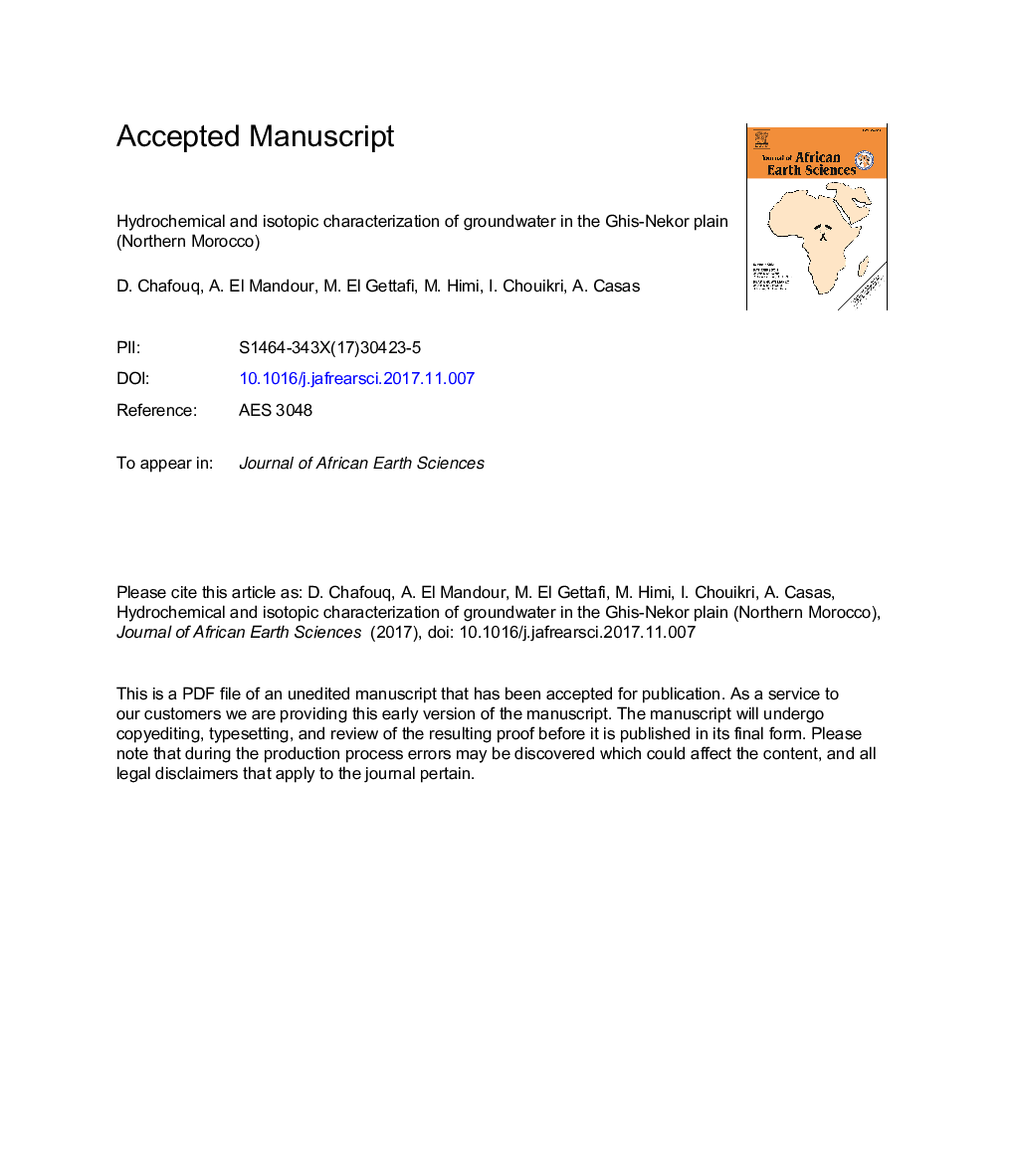| کد مقاله | کد نشریه | سال انتشار | مقاله انگلیسی | نسخه تمام متن |
|---|---|---|---|---|
| 8913578 | 1640169 | 2018 | 42 صفحه PDF | دانلود رایگان |
عنوان انگلیسی مقاله ISI
Hydrochemical and isotopic characterization of groundwater in the Ghis-Nekor plain (northern Morocco)
ترجمه فارسی عنوان
مشخصات هیدرو شیمیایی و ایزوتوپ آبهای زیرزمینی در دشت قیس نکر (شمال مراکش)
دانلود مقاله + سفارش ترجمه
دانلود مقاله ISI انگلیسی
رایگان برای ایرانیان
کلمات کلیدی
دشت قیس نیکور، ایزوتوپها، شوری نفوذ آب دریا،
موضوعات مرتبط
مهندسی و علوم پایه
علوم زمین و سیارات
زمین شناسی
چکیده انگلیسی
The coastal aquifer of Ghis-Nekor (Morocco) was studied to identify the major processes causing salinization of groundwater. In fact, a geochemical approach multi tracer (general chemistry and isotopes - δ2H, δ18O-H2O, δ34S, δ18O-SO4) was utilized, with the hydrodynamics to explain the processes responsible for the salinization of groundwater, and for identttifying areas most vulnerable to seawater intrusion. The recharge of the aquifer is mainly by the Al-Khattabi dam, the Nekor River and the Ghis River, on the eastern border of the plain. The water that feeds the aquifer shows a relatively high level of salinity and for this reason, the majority of sampled wells indicate high values of electric conductivity and total salinity which arrives at 7.5 g Lâ1. The plot of the geochemical results analyzes of groundwater in the Piper diagram shows two distinct chemical facies; sodium chloride-facies and chlorinated calcium and magnesium sulfated facies. The concentrations of 18O range between â4.15â° and â5.73â°, while the values of 2H range between â28.4â° and â41.7â°. The Nekor river water is depleted in heavy isotopes, and the isotopic compositions are in the order on â6â° for 18O and â40.5â° for deuterium. Most of the wells have a slope <8 indicating a slight evaporation before infiltration. The data show low and variable d-excess values (range from â0.02â° to 11.6â°), reflect recharge during different climatic conditions. The isotopic concentrations of 18O-SO4 vary between 4.35â° and 8.60â°, while the 34S isotope values range from â4.3â° to 9.9â°. For Ghis River, these values are between â4.4â° and 4.95â°, respectively, for sulfur and oxygen. The interpretation of the chemical and isotopic results suggesting the intrusion of seawater to increase salinity of groundwater in the region is low. However, only the NE area shows probable contamination of seawater. In contrast, wells are saline independent of seawater intrusion, the origin of the high salinity can be related to: 1- the accumulation of rivers fluid intake and water dam rich dissolved salts and sulphates, 2- the anthropogenic pollution (domestic sewage, agricultural inputs, septic uses).
ناشر
Database: Elsevier - ScienceDirect (ساینس دایرکت)
Journal: Journal of African Earth Sciences - Volume 139, March 2018, Pages 1-13
Journal: Journal of African Earth Sciences - Volume 139, March 2018, Pages 1-13
نویسندگان
D. Chafouq, A. El Mandour, M. Elgettafi, M. Himi, I. Chouikri, A. Casas,
